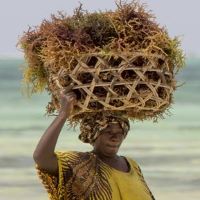Categories
Towards Investment in Sustainable Fisheries: A Framework for...
Marine capture fisheries provide significant benefits at a global and local level. They contribute more than US$270 billion to global GDP, provide nearly three billion people with at least 20% of thei...
Report of the Expert Meeting on Food Safety For Seaweed: Cur...
Seaweeds or marine macroalgae are pluricellular, photosynthetic organisms found mainly in the marine environment. They are typically classified by their pigmentation as brown, red or green, and are pr...
Deep-sea Atlas of the Eastern Mediterranean Sea: state-of-th...
The IUCN Centre for Mediterranean Cooperation and the Hellenic Centre for Marine Research present the Deep-sea Atlas of the Eastern Mediterranean Sea - the first collective work to compile the existin...
Interventions for improving the productivity and environment...
Volume 4, Issue 9, 17 September 2021, Pages 1220-1232 Aquatic foods are increasingly being recognized as having an important role to play in an environmentally sustainable and nutritionally sufficient...
Economic Analysis of the Contributions of Capture Fisheries ...
There is much concern about future food supply and demand on the basis of expected population growth as well as due to the large number of people still suffering from undernourishment. At the same tim...
Seaweeds and Microalgae: An Overview for Unlocking their Pot...
Algae, including seaweeds and microalgae, contribute nearly 30 percent of world aquaculture production (measured in wet weight), primarily from seaweeds. Seaweeds and microalgae generate socio-economi...
Triggers and Drivers for Establishing a Profitable Aquacultu...
Aquaculture is an investment option. However, as with all solid investments, this option should only be transformed into action if, through comprehensive market and business planning, it proves to be ...
Aquaculture Facts
Posted by Karyn Moyer Aquaculture is the farming of fish, crustaceans, aquatic plants, and more to produce food and other commercial products, as well as replenish wild stocks and rebuild populations ...
What Is Aquaculture and Why Do We Need It?
By 2030, 62 percent of all seafood produced for human consumption will come from aquaculture. Today, it’s about 50 percent. So, what is aquaculture? Aquaculture is the controlled process of cultivatin...

